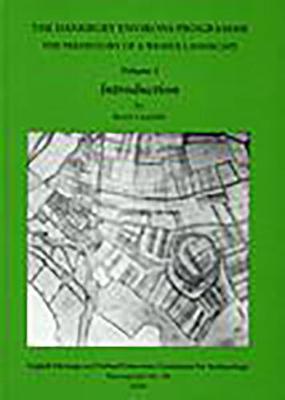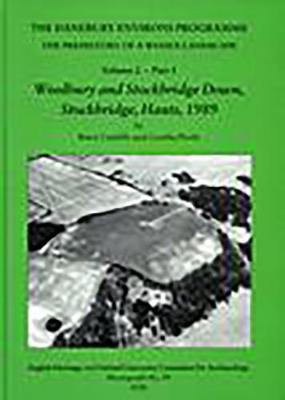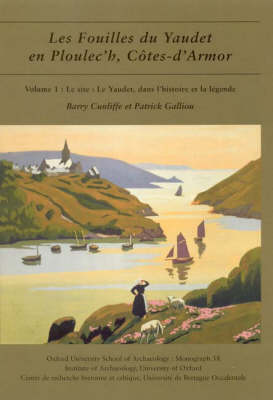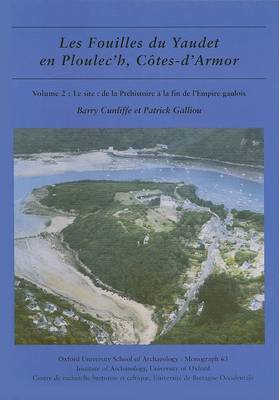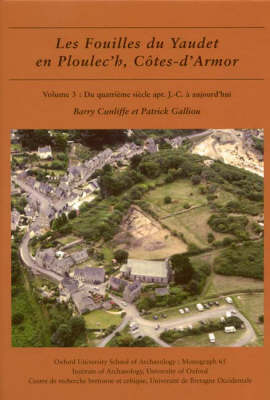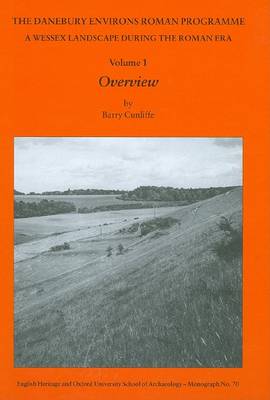Oxford University School of Archaeology Monograph
5 primary works • 6 total works
Book 48
Following his research on the hillfort Barry Cunliffe has led a massive campaign to explore the surroundings of the site, and this has resulted in a further series of volumes, the first set on the Prehistoric evidence and the second set on the Roman Period evidence. This volume is the Introduction and overview to the Prehistoric set; to an extent it summarises the findings reported from the seven separate sites that make up Vol 2.
Book 49
Volume 2 comprises seven separate volumes reporting on the excavations and research at the following sites: Woolbury and Stockbridge Down 1989, Bury Hill, Upper Clatford 1990, Suddern Farm, Middle Wallop 1991 & 1996, New Buildings & Fiveways, Longstock 1992 & 1996, Nettlebank Copse, Wherwell 1993, Houghton Down, Stockbridge 1994, Windy Dido, Cholderton 1995.
Book 58
Les fouilles du Yaudet en Ploulec'h, Cotes-d'Armor
by Barry Cunliffe and Patrick Galliou
Published 8 April 2004
Le Yaudet is a promontory of granite commanding the estuary of the river Léguer down-river from the modern town of Lannion (Côtes d'Armor). It has long been known as the 'Old Town' (Civitas vetus in Latin documents and Coz Yaudet in Breton) and Iron Age, Roman and medieval finds have been made from time to time over the last two centuries. A programme of research excavations began in 1991 and continued annually until 2002. The results of the work show the site to have been in use almost continuously from the early prehistoric period. This publication is the first of four volumes documenting the fascinating discoveries made at this important site. Written entirely in French, it provides an overview of the site, giving insight into the physical geography, the town's history prior to excavation, and the archaeological research programme. It is lavishly illustrated with many photographs and line drawings.
Book 63
Les fouilles du Yaudet en Ploulec'h, Cotes-d'Armor, volume 2
by Barry Cunliffe and Patrick Galliou
Published 2 February 2006
Le Yaudet (in Brittany, France) is a promontory of granite commanding the estuary of the river Léguer down-river from the modern town of Lannion (Côtes d'Armor). It has long been known as the 'Old Town' ( Civitas vetus in Latin documents and Coz Yaudet in Breton) and Iron Age, Roman and medieval finds have been made from time to time over the last two centuries. A programme of research excavations began in 1991 and continued annually until 2002. The results of the work show the site to have been in use almost continuously from the early prehistoric period. This is the second volume and deals with the Prehistoric period, continuing up until the end of the Gallic Empire.
Book 65
Les fouilles du Yaudet en Ploulec'h, Cotes-d'Armor, volume 3
by Barry Cunliffe and Patrick Galliou
Published 12 April 2007
The third volume of the Le Yaudet excavation reports details the history and archaeology of the site from AD 300 until the present day. The promontory overlooking the estuary of the river Léguer was reoccupied in the late fourth century, possibly by a military detachment from Britain, and thereafter developed as an ecclesiastical site in the fifth to eighth centuries. In the later medieval period it became a village clustered around the chapel. The report presents the archaeological and material evidence for these periods in detail.
From 1997 to 2006 the Danebury Trust, under the direction of Barry Cunliffe, excavated seven sites on the chalk downland of eastern Hampshire to explore the rural settlement of the region in the Roman period. The project was designed to build upon our knowledge of the area following the excavation of the Iron Age hillfort of Danebury and of eight Iron Age settlements in the region. The results of the present project are published in two volumes. Volume 1 offers an overview of the programme together with a series of studies exploring the results in their wider contexts. Volume 2 is presented in seven separate parts each dealing with the results of one specific excavation. The sites covered include the Early Iron Age settlement of Flint Farm, the Early Iron Age and Roman site of Rowbury Farm and the Roman villa establishments at Houghton Down, Grateley South, Fullerton, Thruxton and Dunkirt Barn. Together the sites enliven our understanding of the development of the Iron Age and Roman rural landscape especially corn production and processing, the use of water power for milling, status and Romanness, ancestor cults, lineages and land-holding, and the social implications of the great aisled halls which dominated the Hampshire landscape. The volumes make a major contribution to our understanding of Iron Age and Roman Britain.
